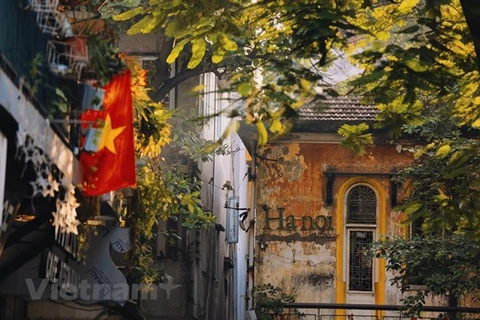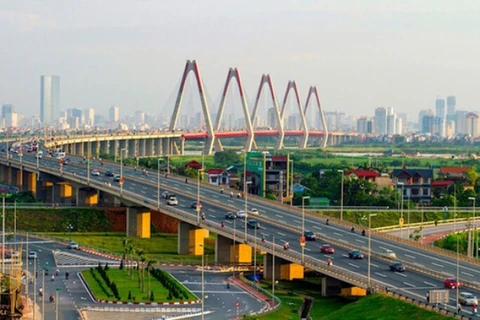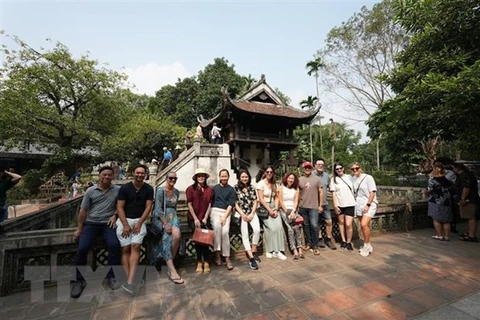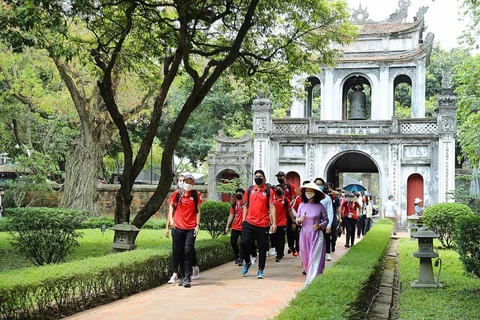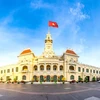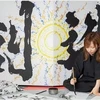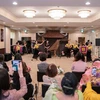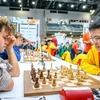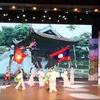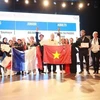 Doan Mon is one of the main entrances to Thang Long Imperial Citadel which was built under Le Dynasty and restored in Nguyen Dynasty. (Photo: VNA)
Doan Mon is one of the main entrances to Thang Long Imperial Citadel which was built under Le Dynasty and restored in Nguyen Dynasty. (Photo: VNA) Hanoi (VNA) - The capital city of Hanoi has 5,922 relics and 1,793 intangible cultural heritages, which are a great advantage for the city in developing tourism and attracting domestic and international visitors.
The city is making efforts towards harmonisation of the preservation of heritage and the development of the tourism sector, in order to achieve sustainable development.
With a history of over 1,000 years, Hanoi is home to numerous well-known heritage sites such as the Thang Long Imperial Citadel, the Van Mieu - Quoc Tu Giam (The Temple of Literature), Hanoi Old Quarter, Mot Cot (One Pillar) Pagoda, Hoan Kiem Lake, the Ngoc Son Pagoda, Hoa Lo Prison and Tran Quoc Pagoda. All are must-see spots for tourists when visiting the Vietnamese capital.
Furthermore, the capital has rich cultural heritage, with traditional performance arts like water puppetry, ca tru singing, century-old festivals, and traditional craft villages like Bat Trang pottery craft village, Van Phuc silk village.
The relics, traditional craft villages, festivals, and folk performance arts have invaluable values in terms of architecture, history, culture, and art which have been preserved and passed down through generations.
Alongside with preservation, the promotion of these values also has great significance. Tourism is an effective channel to promote these values, so heritage conservation always goes hand in hand with tourism development and supports each other.
Le Xuan Kieu, director of the Centre for Van Mieu - Quoc Tu Giam Cultural and Scientific Activities, said the centre seeks to become an attractive tourist destination in the capital. Every year, the site attracts more than two million tourists and the revenue is reserved for heritage preservation and other management tasks.
The head of the management committee of Duong Lam ancient village Nguyen Dang Thao said that most of the old houses in the village offer tourism services, helping generate jobs for local residents.
According to Dr. Tran Duc Nguyen of Hanoi University of Culture, for many years, Hanoi's tourism development has focused on historical relics, craft villages, and gastronomy. The earnings from tourism have contributed to the economic development of the capital.
Affirming the close connection and mutual influence of cultural heritage and tourism, experts said that revenues from tourism should be used to invest in the preservation of cultural heritage.
Dang Van Bai, vice chairman of the National Council for Cultural Heritage, proposed that Hanoi increase investment in conservation activities and experiment with the public-private partnership model in related activities.
Priority should be given to expanding community-based tourism to preserve cultural heritage in the community, Bai noted.
To develop tourism in association with conservation, promote the strengths of the heritage and build a high-quality brand for its tourism industry, Hanoi Tourism Department has worked with relevant agencies in planning, investing, preserving and restoring relics with a view to enhancing added value for the city's tourism products, according to the department’s Director Dang Huong Giang.
Attention has been paid to key projects such as the one on preserving and promoting the values of Co Loa Citadel, Thang Long Imperial Citadel, Bat Trang ceramic village and Van Phuc silk village.
Giang said that the department has focused on exploiting the city’s cultural characteristics to develop special tourism products with high competitiveness. Specifically, it has built tours for visitors to explore the architectural space and cultural values of the Old Quarter, Hoan Kiem Lake area and its vicinity, and organised traditional festivals along with folk art activities.
Travel agencies have been encouraged to coordinate with the management of relics to build experiential tourism products on the ground of traditional tourism products, the official said./.

